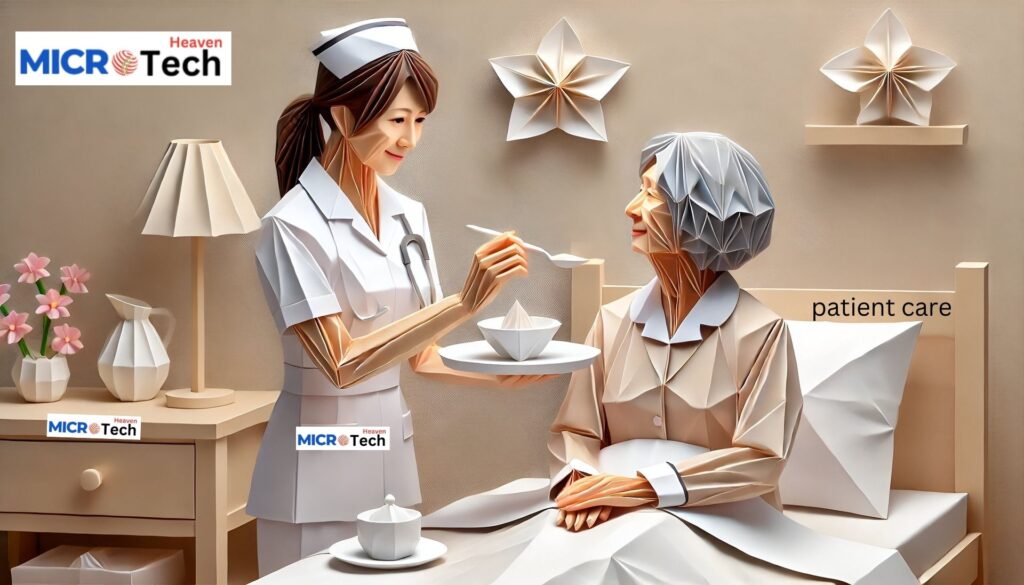Future of Wearable Tech in Healthcare
Index
- Introduction
- What is Patient-Centric Care?
- Key Principles of Patient-Centric Care
- Benefits of Patient-Centric Care Models
- Implementing Patient-Centric Care: A Step-by-Step Guide
- Real-Life Examples and Anecdotes
- Challenges in Adopting Patient-Centric Care
- Future of Patient-Centric Care Models
- Conclusion
- FAQs
Introduction
Healthcare is changing. Instead of focusing only on treating illnesses, the spotlight is shifting to the patients themselves. Patient-centric care is all about putting people at the center of healthcare decisions, making sure their needs, preferences, and values come first. This guide will walk you through what patient-centric care means, why it matters, and how it’s changing healthcare for the better.
What is Patient-Centric Care?
Patient-centric care is a healthcare approach that treats patients as active partners in their own health. It’s not just about fixing a medical problem—it’s about understanding the person behind the illness. By encouraging collaboration between patients and healthcare providers, this model ensures that care is personalized, respectful, and effective.

Key Elements of Patient-Centric Care
- Respect for Patients’ Values: Every patient has unique preferences and beliefs, and these should guide their care.
- Emotional Support: Healthcare isn’t just physical; emotional well-being matters too.
- Clear Communication: Open conversations between patients and providers ensure better understanding and trust.
- Family Involvement: Loved ones can play a big role in supporting a patient’s journey.
Accessibility: Patients need easy access to care, whether it’s in person or through technology
Key Principles of Patient-Centric Care
Patient-centric care stands on these core principles:
- Respect for Preferences: Understanding and honoring what matters most to patients.
- Coordinated Care: Making transitions between services smooth and stress-free.
- Information Sharing: Helping patients understand their health and treatment options.
- Comfort: Prioritizing physical and emotional comfort.
- Support Systems: Encouraging family and friends to be part of the care process.
Benefits of Patient-Centric Care Models
- Better Health Outcomes: Patients who take an active role in their care often see improved results.
- Higher Satisfaction: Feeling heard and respected makes a big difference in patient experience.
- Lower Costs: Preventive care and early intervention can save money in the long run.
- Stronger Relationships: Open communication builds trust between patients and providers.
Implementing Patient-Centric Care: A Step-by-Step Guide
- Evaluate Current Practices: Identify what’s working and what needs improvement.
- Train Staff: Teach healthcare teams to communicate effectively and show empathy.
- Use Technology: Tools like telehealth and health apps make care more accessible.
- Listen to Patients: Collect feedback to understand their experiences.
- Collaborate on Care Plans: Involve patients in creating personalized treatment plans.
Real-Life Examples and Anecdotes
Take Sarah, a 45-year-old woman diagnosed with diabetes. Initially, she felt lost in the system. But when her care team adopted a patient-centric approach, things changed. By including her in decision-making and focusing on her preferences, Sarah learned to manage her condition effectively. Her blood sugar stabilized, and she felt empowered to take charge of her health.
Challenges in Adopting Patient-Centric Care
- Resistance to Change: Some providers are used to traditional methods and may be hesitant to switch.
- Limited Resources: Smaller healthcare facilities may struggle to implement new systems.
Time Pressures: Providers often face tight schedules, making meaningful interactions harder
Future of Patient-Centric Care Models
As technology advances, patient-centric care will only grow stronger. Tools like AI can help predict health needs and provide personalized care. With more organizations embracing this approach, the future of healthcare looks more inclusive and patient-focused.
Conclusion
Patient-centric care is reshaping healthcare by putting patients first. It’s not just about treating illnesses—it’s about understanding people, building trust, and working together for better health outcomes.
FAQs
1. What is patient-centered care?
It’s a healthcare model that prioritizes patients’ needs, values, and preferences, involving them in decisions about their care.
2. How does it benefit patients?
It improves health outcomes, enhances satisfaction, lowers costs, and builds trust between patients and providers.
3. What challenges exist in implementing patient-centered care?
Resistance to change, limited resources, and time constraints can make adoption difficult.
4. How can technology help?
Technology like telehealth, electronic health records, and health apps can make care more accessible and personalized.
Patient-centric care isn’t just a trend—it’s the future of healthcare. Let’s embrace it for a healthier, happier tomorrow!


